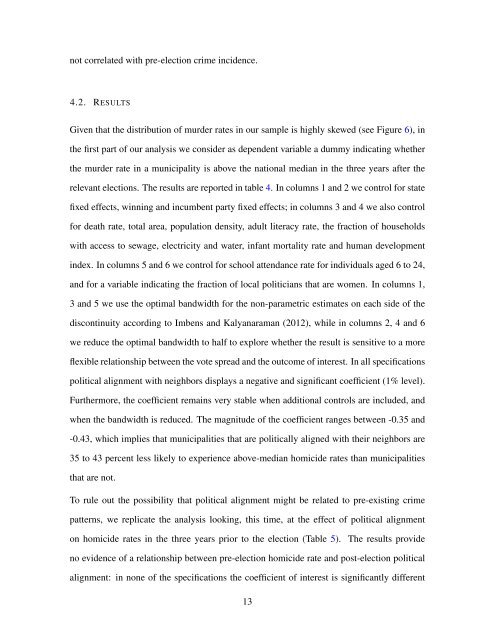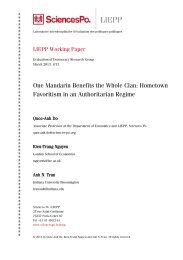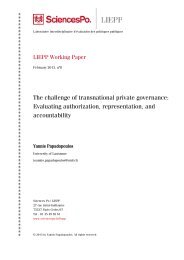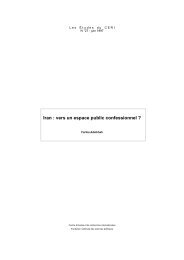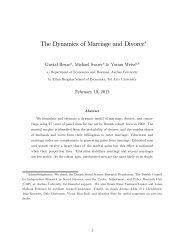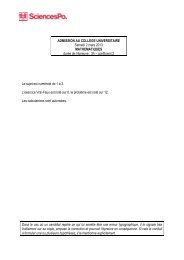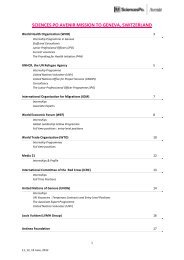Fighting Crime with a Little Help from my Friends ... - Sciences Po
Fighting Crime with a Little Help from my Friends ... - Sciences Po
Fighting Crime with a Little Help from my Friends ... - Sciences Po
Create successful ePaper yourself
Turn your PDF publications into a flip-book with our unique Google optimized e-Paper software.
not correlated <strong>with</strong> pre-election crime incidence.4.2. RESULTSGiven that the distribution of murder rates in our sample is highly skewed (see Figure 6), inthe first part of our analysis we consider as dependent variable a dum<strong>my</strong> indicating whetherthe murder rate in a municipality is above the national median in the three years after therelevant elections. The results are reported in table 4. In columns 1 and 2 we control for statefixed effects, winning and incumbent party fixed effects; in columns 3 and 4 we also controlfor death rate, total area, population density, adult literacy rate, the fraction of households<strong>with</strong> access to sewage, electricity and water, infant mortality rate and human developmentindex. In columns 5 and 6 we control for school attendance rate for individuals aged 6 to 24,and for a variable indicating the fraction of local politicians that are women. In columns 1,3 and 5 we use the optimal bandwidth for the non-parametric estimates on each side of thediscontinuity according to Imbens and Kalyanaraman (2012), while in columns 2, 4 and 6we reduce the optimal bandwidth to half to explore whether the result is sensitive to a moreflexible relationship between the vote spread and the outcome of interest. In all specificationspolitical alignment <strong>with</strong> neighbors displays a negative and significant coefficient (1% level).Furthermore, the coefficient remains very stable when additional controls are included, andwhen the bandwidth is reduced. The magnitude of the coefficient ranges between -0.35 and-0.43, which implies that municipalities that are politically aligned <strong>with</strong> their neighbors are35 to 43 percent less likely to experience above-median homicide rates than municipalitiesthat are not.To rule out the possibility that political alignment might be related to pre-existing crimepatterns, we replicate the analysis looking, this time, at the effect of political alignmenton homicide rates in the three years prior to the election (Table 5). The results provideno evidence of a relationship between pre-election homicide rate and post-election politicalalignment: in none of the specifications the coefficient of interest is significantly different13


